The number of SaaS companies grew from 150 in 2011 to 8,000 in 2020 – a 5,000% growth, according to Scott Brinker’s annual Martech 5000 analysis.
It’s getting crowded and competitive.
As a result, basic SEO tactics don’t cut it.
I compiled three of my favorite advanced SaaS SEO strategies in this article, some of which I used during my time at Atlassian myself. (Disclosure: I worked at Atlassian for years.)
Usual Challenges of SaaS SEO
A lot of startups see initial traction with content marketing.
They build a couple of landing pages, get a TechCrunch article, and hit the 1M ARR (annual recurring revenue) mark.
But then they lose momentum.
Conversions and traffic stagnate, the marketing team becomes overloaded, and the attention on paid channels becomes bigger.
Once a business is hooked on paid channels, it’s hard to get off.
And those that get on it too early take away their chance for organic growth.
Sometimes paid channels mask Product/Market-Fit, and the company runs into the “leaky bucket problem” – they have a hard time retaining customers.
So, the main challenge for SaaS startups is to keep the early momentum going and scale organic traffic.
But title optimization and blog articles are not enough.
They need advanced strategies.
From Basic to Advanced
Don’t confuse advanced SEO tactics with hacks or tricks.
The key is scalability.
Whereas basic SEO tactics may get you on Page 1 of Google for a set of keywords, advanced strategies allow you to tackle hundreds – maybe thousands – of keywords with one format.
The easiest way to push scalability is to create more pages with inventory like:
- Apps.
- Integrations.
- Marketplace format.
This strategy comes with its own technical SEO challenges and needs to fit into the bigger business strategy.
However, sometimes companies don’t make their inventory public.
This is a costly mistake.
The other way is to create content in a more programmatic way than a blog – that’s when you build full hubs of content.
Lastly, scalable SEO isn’t just focused on content but also links.
To get high-quality links, tools are celebrating a resurgence.
And I’m pointing a few successful ones in the SaaS space out as well.
Some brands that are doing this really well are:
- Shopify.
- HubSpot.
- Canva.
- Zapier.
- Atlassian.
1. Learn Hubs
Blogs published content in time-sorted feeds long before Facebook launched theirs in 2006.
“Sorted by new” is exciting when there’s too much content to comprehend.
But not all content has to be published that way, especially when you create evergreen content.
The alternate structure resembles a library much more.
I call that a “Learn Hub”, but some call it a resource or knowledge center.
Learn Hubs systematically target keywords within a topic.
This makes it much easier to scale traffic and keep readers engaged because the content lives closer together.
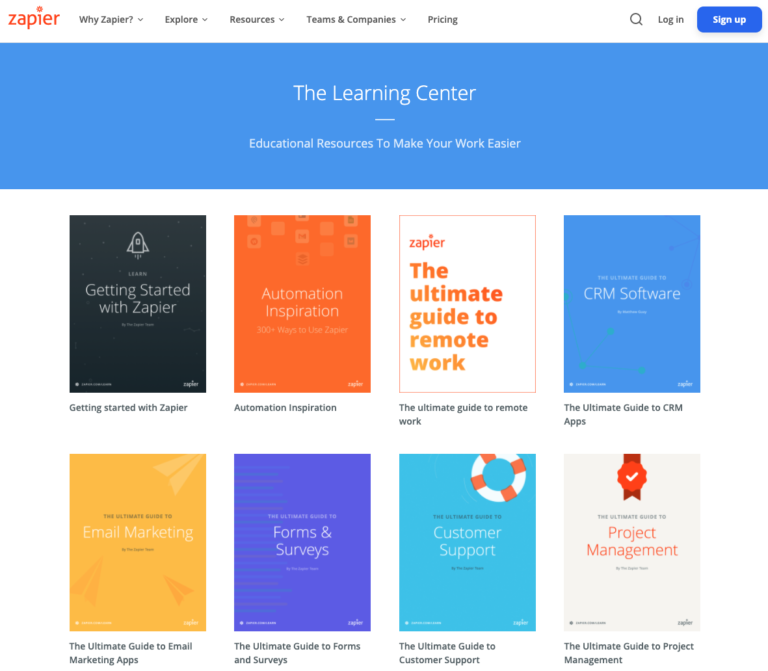
Zapier, for example, built a library around the blog content.
They cover topics from “How to use Zapier” to “automation” or “CRM”.
What I find very elegant is how they integrate the product with the content.
Most articles show related Zaps in the side navigation, drives conversions (I know from my time at Atlassian), and product engagement.
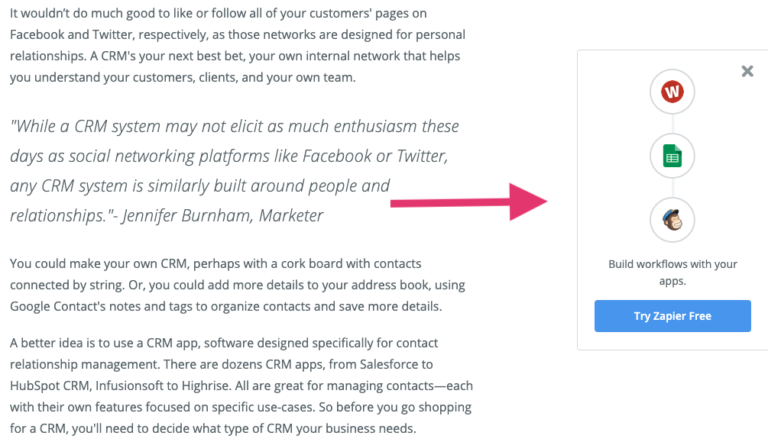
Zapier’s learn hub ranks for almost 5,000 keywords in the top 10 and brings roughly 50,000 monthly sessions, according to SEMrush.
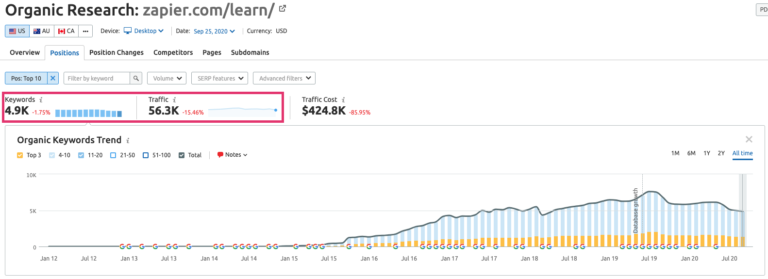
But they aren’t alone.
Hasura has a learn hub around frontend and backend tutorials that ranks for over 650 keywords in the top 10 and drives 30K monthly sessions.
Canva gets over 250,000 sessions from over 5,500 top 10 keywords and also found a smart way to integrate their product with content by linking directly to templates.
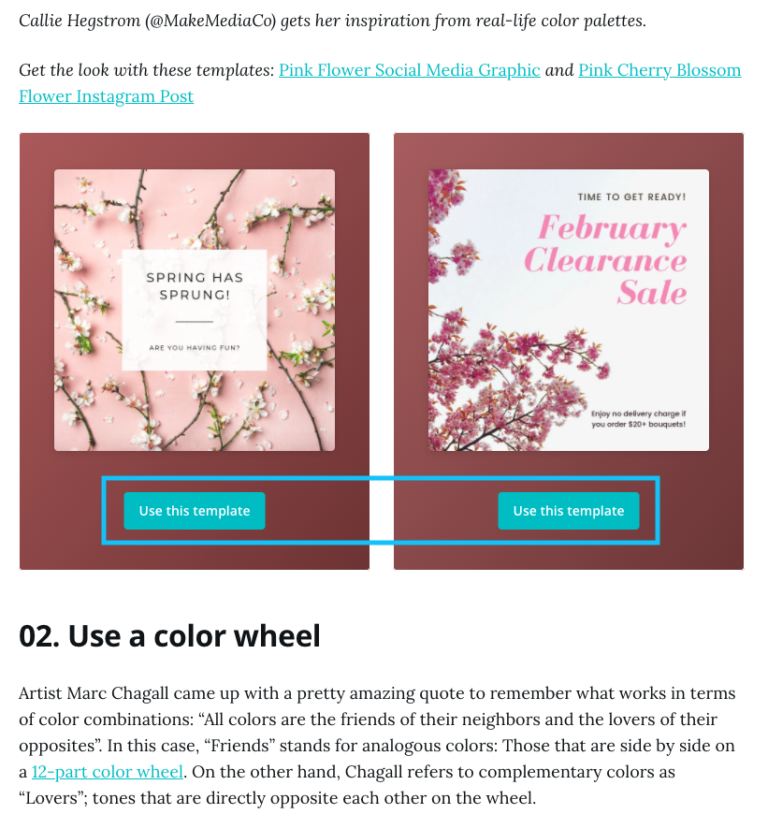
QuickBooks’ resource center ranks for over 2,800 keywords in the top 10 and brings about 89,00 monthly sessions.
It educates readers on topics like bookkeeping, cash flow, or invoicing.
2. Marketplaces
In the SaaS world, you’re either a platform or you integrate with one.
Just think about Slack and how many other products you can connect with it.
For SEO, the inventory of integrations or apps serves as a scalable page format.
So do marketplaces around apps, service providers, or valuable goods like themes.
The questions that come up are:
- What content to display on these pages.
- How to interlink them.
- How to integrate this system into the rest of the site.
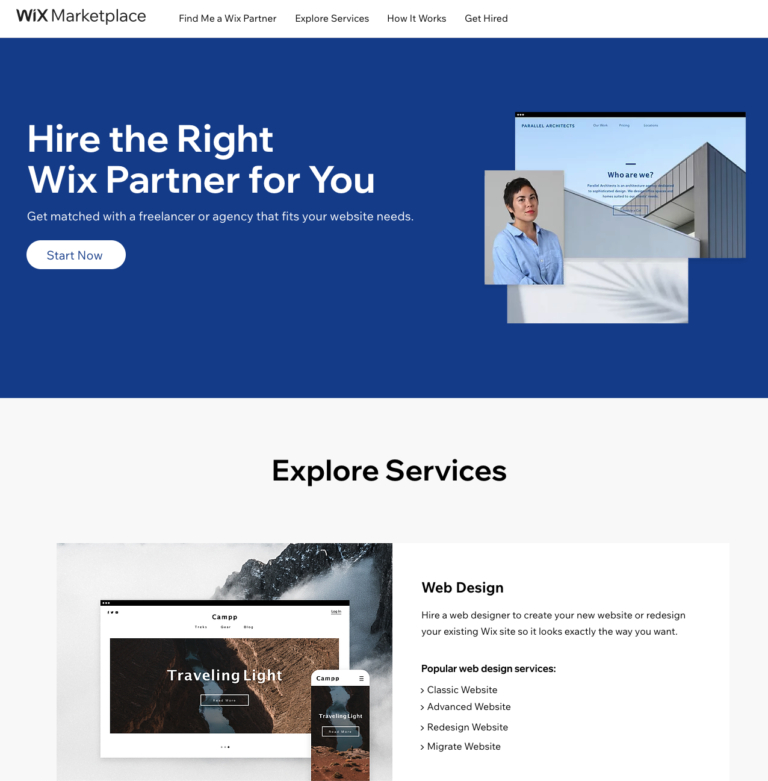
Wix, for example, is a SaaS solution for freelancers but also offers a marketplace that connects site owners with freelancers in website design, marketing, or web development.
Zapier offers a large space for integrations under/apps, ranks for over 5,000 keywords in the top 10, and drives over 65,000 monthly sessions.
Shopify has a subdomain for apps that ranks for over 3,500 keywords in the top 10 and drives more than 140,000 monthly sessions.
Atlassian has a marketplace that drivers over 28,000 monthly sessions with more than 1,000 keywords in the top 10 that connects product users with applications for Jira, Confluence, BitBucket, and other solutions.
3. Tools
Even though many SaaS companies build powerful brands that attract lots of organic links, SEO professionals in the space can’t rest on their laurels.
I’m not talking about buying links or PBNs and not even about guest posts, but linkable assets.
Besides annual reports and other data-driven content formats that are very powerful, tools still do the trick.
Surprise!
Tools have driven great links for ages.
But now that SaaS products and web experience borders blur, tools have gain new popularity because they serve as a gateway drug to the main product.
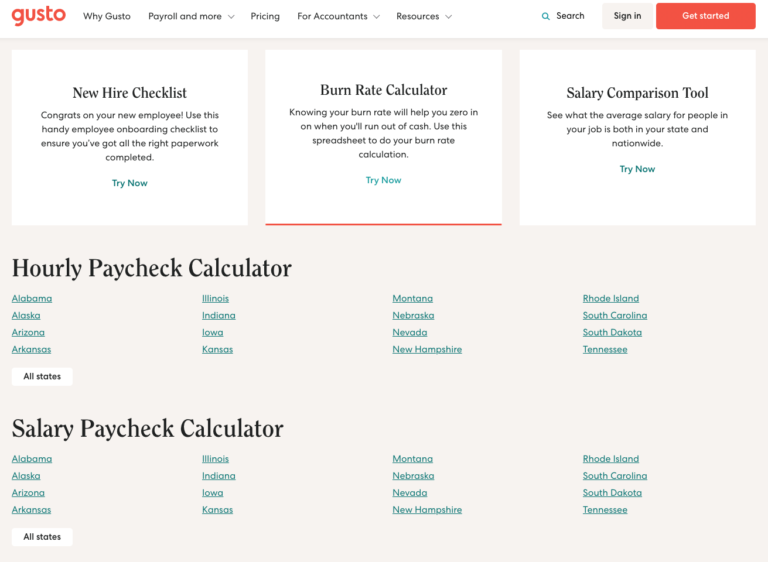
Gusto has a full library of different tools that drive over 2,000 backlinks and over 90,000 monthly sessions, according to Ahrefs.
One that I found very interesting is an hourly pay calculator for all 50 states.
Other tools include new employee checklists, salary comparisons, or tax calculators.
All of these provide substantial value for Gusto leads, and they fit in the space.
Splunk created a value calculator – an idea I could see work for many businesses – that collected 1,500 backlinks over time.
Their data maturity calculator drew even 5,800 backlinks – a testament to the returns from creative calculators.
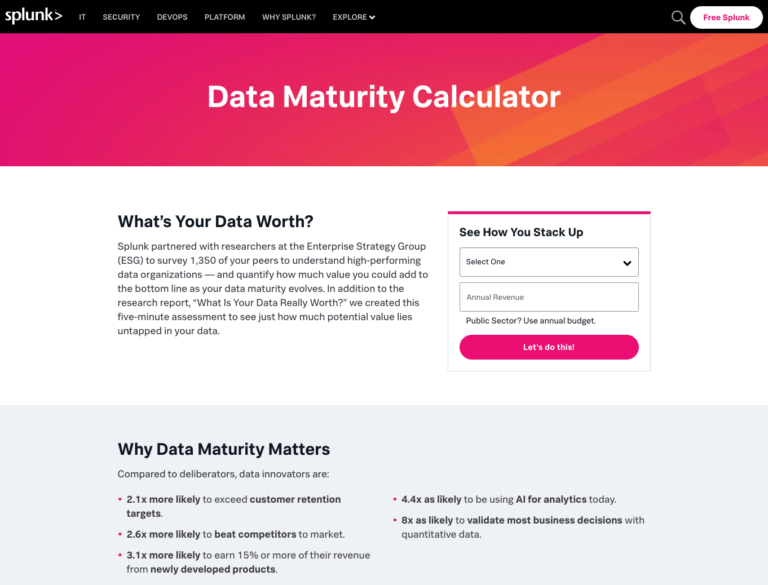
Shopify built a library of tools for merchants, and again, it’s about value first and links second.
From slogan maker to business card maker or invoice generator, Shopify has a tool for it and attracted a massive 39,500 links and over 200,000 monthly sessions.
Developing Scalable SEO Strategies
The way to break through the traffic and conversion plateau is through scalable SEO strategies.
At the traffic inflection point, the site progresses from a marketing tool to a destination where users find answers to problems, tools, and exciting content.
At Atlassian, we made many choices with the user in mind first and SEO second (or third after the product).
Many ideas were born out of usefulness for customers and readers, and then we used SEO data like search volume to support it.
So, there are two takeaways from this article.
- Seek scale, not just in your product but in your marketing as well. SEO is well-suited for scale if you know how to do it.
- Start from a user-perspective when finding scalable SEO tactics. Often, users point the way in interviews, surveys, or tests.
Asking for alternatives to your product that don’t involve direct competitors can show the way to topics that your customers care about, yielding lots of opportunities to create content around.
More Resources:
- SEO Basics for SaaS Companies
- SaaS Growth Fundamentals: 7 Systems for Generating Repeat Business
- Effective SEO Implementation for Software Businesses
Image Credits
All screenshots taken by author, September 2020





